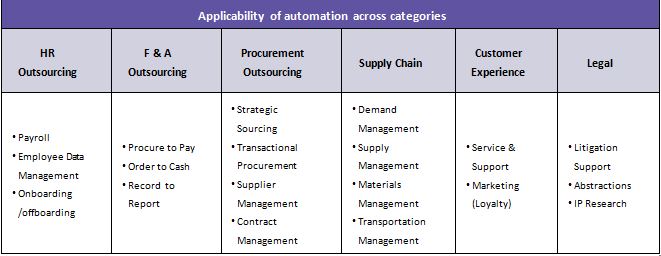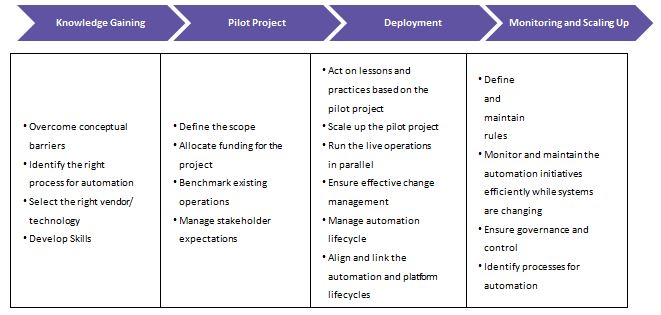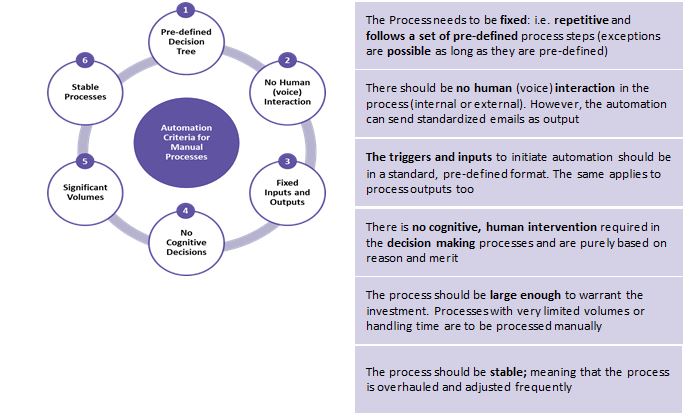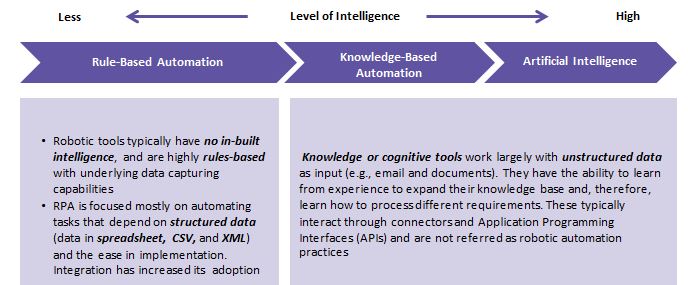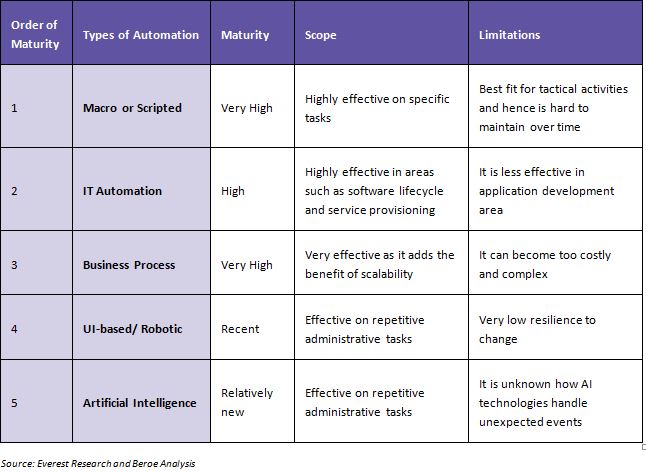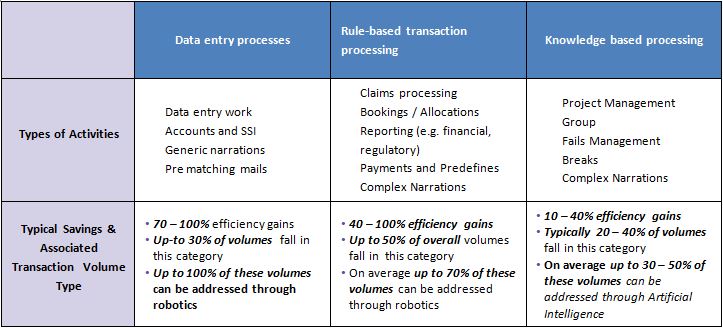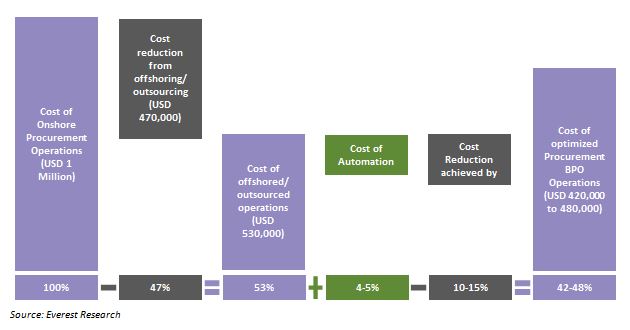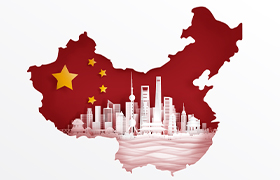
Automation practices and its benefits in BPO

Business Case
1 Introduction
The BPO model for transactional activities has achieved the highest level of efficiencies in terms of standardisation and centralization in recent years, driven by rigorous process and technological advancements incrementally added along its evolution timeline.
2 Main
Automation practices in BPO are considered as the next big thing in the area of process improvements in the industry. Robots, softwares, and automated processes will drive the transformation of BPO in the future.
3 Recommendation
A BPO ecosystem with systematic involvement of automation practices and the right implementation roadmap can help organizations achieve significant process and cost savings. Automation and offshore model can further the achievements to a greater extent.
Problem Statement
BPO evolution has always been driven by the constant demand to achieve cost and process efficiencies. The transactional activities in procurement and finance have been in the scope of process standardization and centralization since the beginning. The repetitive and less judgement-intensive nature of these activities made them ideal for outsourcing.
The current state of BPO industry is highly mature and standardised providing significant cost savings. Having reached a saturation point, the industry has no more room for furthering the efficiencies.
The elements in BPO that once beckoned organizations for its adoption are:
- Focus on core business activities: By outsourcing non-core business activities, companies could concentrate on developing their core-business strategies and increase their profits. Now, organizations want to further narrow down the focus and resources allocated to non-core transactional activities
- Process streamlining and centralization: Pioneer organizations, in at least the second or even the third generation of their BPO history, have all explored and exhausted the opportunities and scope for savings. The incremental savings that the processes deliver are minimal and the year-on-year figures do not incentivise the concerned teams to focus further on improvements
- Low-cost country sourcing: The offshoring of operations to low-cost locations such as India and Philippines that derive cost savings based on exchange rates and labour arbitrage have also reached a level of diminishing marginal increments.
The solution - automation practices – the future of BPO
The market has turned its focus towards the advancements that process automation industry has made in using robotics, macros, rule-based algorithms, etc.
Objectives:
- To automate intricate and manual business process operations such as data entry, approvals, data manipulation and record-keeping
- To enable the processes with decision making capabilities and the scope to further refine the use of resources
Approach:
- All the leading third party outsourcing service providers in the market maintain high-standards in customizing the existing processes based on buyer needs
- With the right partner, business process automation platforms enhance the quality of processes and services of the organization
Applicability of automation across categories
Given the current stage of maturity, automation can be adopted for transactional, repetitive, and less judgement-intensive processes.
Source: Beroe Analysis
How to adopt automation practices?
The digital/robotic automation, commonly termed Robotic Process Automation (RPA), is the most adopted and relatively mature technology. The objective of RPA is unequivocal – to iterate the business processes in a way that it replaces human resources.
Generic roadmap adopted by organizations to approach BPO automation
Source: Beroe Analysis
The process selection for automation should be based on systematic criteria and a structured roadmap.
Source: Beroe Analysis
The types of automation, its scope and maturity
Considering the existing legacy systems and operations widely used in BPO environments that the innovative automation technologies must interact with, here are some observations:
- In certain cases, it is purely the maturation of the technology that takes time, however, industrialization is the hardest part
- Technologies benefit only if there are comparatively strong integration points with the existing operations and systems as complex legacy issues make the adoption of new technology even harder
1. Based on process level: Based on the scope of automation in terms of the processes it can be associated with, we can segment them into 3 types
Source: Beroe Analysis
2. Based on level of Intelligence: The automation tools/practices differ based on the level of intelligence the processes demand
Source: Beroe Analysis
3. Based on the origin: Automation technologies can be segmented into five categories. Macro or scripted, IT, and business process automation are the most adopted technologies
Case Example:
A Dutch semiconductor manufacturer, one of world’s top 20 Semiconductor sales leaders wanted to streamline their journal processing activity using automation practices. The buyer had outsourced Procure to pay, AR and OTC processes already.
As-is Situation:
Journals were processed either manually (keyed in ERP) or by uploading using Excel templates. The manual journals contributed to about 16 percent and auto-uploads contributed to 84 percent of the overall volume. Since they were adhering to the acceptable SLAs during the period, the biggest challenge was that 85 percent of the monthly volumes were received during month end with the process prone to typo and oversight errors.
Solution:
The buyer along with the third party outsourcing servicing provider initiated efforts to streamline the scope. The identification of automation opportunities where conducted via the third party’s proprietary Business Process Management System and the DMAIC approach. The robotic process automation (RPA) enabled auto-selection of the template, auto-data entry into document, auto-emails and auto-data entry into ERP capabilities
Benefits:
· 100 percent accuracy in the transactions processed by Robot
· 100 percent of the process is automated post RPA implementation
· 60 percent time saving per transaction
· Improved capability to handle month end volumes as per predefined SLAs (2 FTE savings)
· Quick development time - 3 days of coding time excluding testing/waiting days
· Robot automatically routes the exceptions instead of manual handling
Benefits from BPO automation
Real-world scenario
RPA is the most mature and widely adopted automation technique in the market currently. A best-in-class RPA process can replace 1.5 FTE manual resource per Robot installed in place.
Source: Beroe Analysis
BPO automation plus offshored operations
An ideal business case scenario to achieve maximum savings from automation practices is observed when automation practices are applied in an offshored BPO operations environment.
For instance, assuming a spend for procurement operations of $1 million for onshore operations, the automation initiative can target to attain 40 percent reduction in FTE count.
Conclusion
If the operations are offshored/outsourced, the combined model which is most lucrative for attaining maximum process and cost efficiencies can achieve around 40-45% cost savings, altogether.
• Also, In the long run there is potential for up to 20 percent savings
• The business process service delivery automation value proposition goes beyond cost reduction; gains in terms of scale, speed, and quality can be attained
• FTE reduction leads to loss of skill and knowledge and likeliness for large-scale errors are possible downsides
• Hence, the best choice is to automate high-volume transactions
Related Insights:
View All
Get more stories like this
Subscirbe for more news,updates and insights from Beroe
